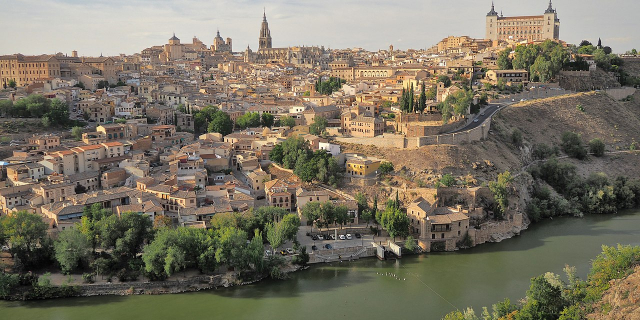Real Monasterio de Santa María de Guadalupe
( Monastery of Saint Mary of Guadalupe )The Royal Monastery of Saint Mary of Guadalupe (Spanish: Real Monasterio de Santa María de Guadalupe) is a Roman Catholic monastic establishment built during the 14th century located in Guadalupe, in Extremadura, Spain. It is located at the foot of the eastern side of the Sierra de las Villuercas and was one of the most important and fine monasteries in the country for more than four centuries. UNESCO declared it a World Heritage Site in 1993.
The monastery had its origins in the late 13th century, when a shepherd from Cáceres, named Gil Cordero, discovered on the bank of the Guadalupe River a statue of the Blessed Virgin,[1] which had been apparently hidden by local inhabitants from Moorish invaders in 714. On the site of his discovery a chapel was built, dedicated under the title of Our Lady of Guadalupe.[2]
King Alfonso XI, who visited the chapel more than once, invoked Santa Maria de Guadalupe in the Battle of Rio Salado. After gaining the victory, he ascribed it to the Madonna's intercession, declared the church at Guadalupe a royal sanctuary and undertook an extensive rebuilding program.
In 1389, the Hieronymite monks took over the monastery and made it their principal house. Construction works continued under the auspices of the order's first prior, and in 1474 Henry IV of Castile was entombed in Guadalupe, next to his mother.
King Ferdinand II of Aragon issued the Sentencia Arbitral de Guadalupe at the monastery on 21 April 1486, thus effectively ending the onerous evil customs allowing medieval nobles in Catalonia to maltreat the remensa peasants and tie them to their lands.
The monastery has rich associations with the New World, including the Guadeloupe island in the Caribbean. It was here in Extremadura where Christopher Columbus made his first pilgrimage after discovering America in 1492 and where he first thanked heaven for his discovery.
Even after the monks from Guadalupe founded the famous monastery of Escorial, which was much closer to the royal capital, Madrid, Santa Maria de Guadalupe retained the royal patronage. It remained the most important cloister in Spain until the Confiscation of monasteries in 1835. In the 20th century, the monastery was revived by the Franciscan Order and Pope Pius XII declared the shrine a "Minor Papal Basilica" in 1955.
 Overview of the main facade and the square that lies before it.
Overview of the main facade and the square that lies before it.




































Add new comment